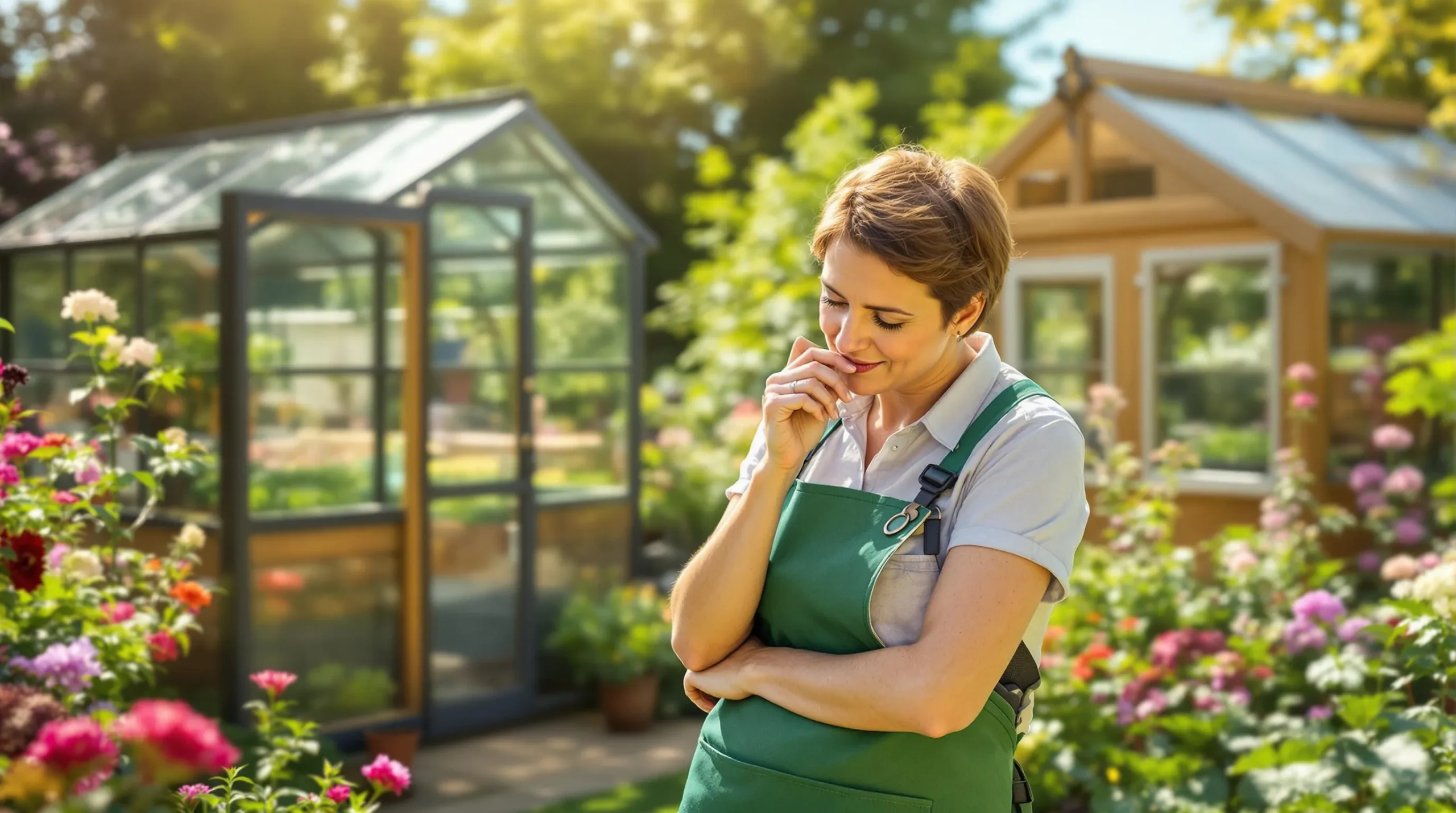
How to Choose Your First Greenhouse: A Complete Beginner’s Guide for 2025
Learn how to choose your perfect first greenhouse with our expert guide. Discover size, materials, and features to extend your growing season by 2-3 months.
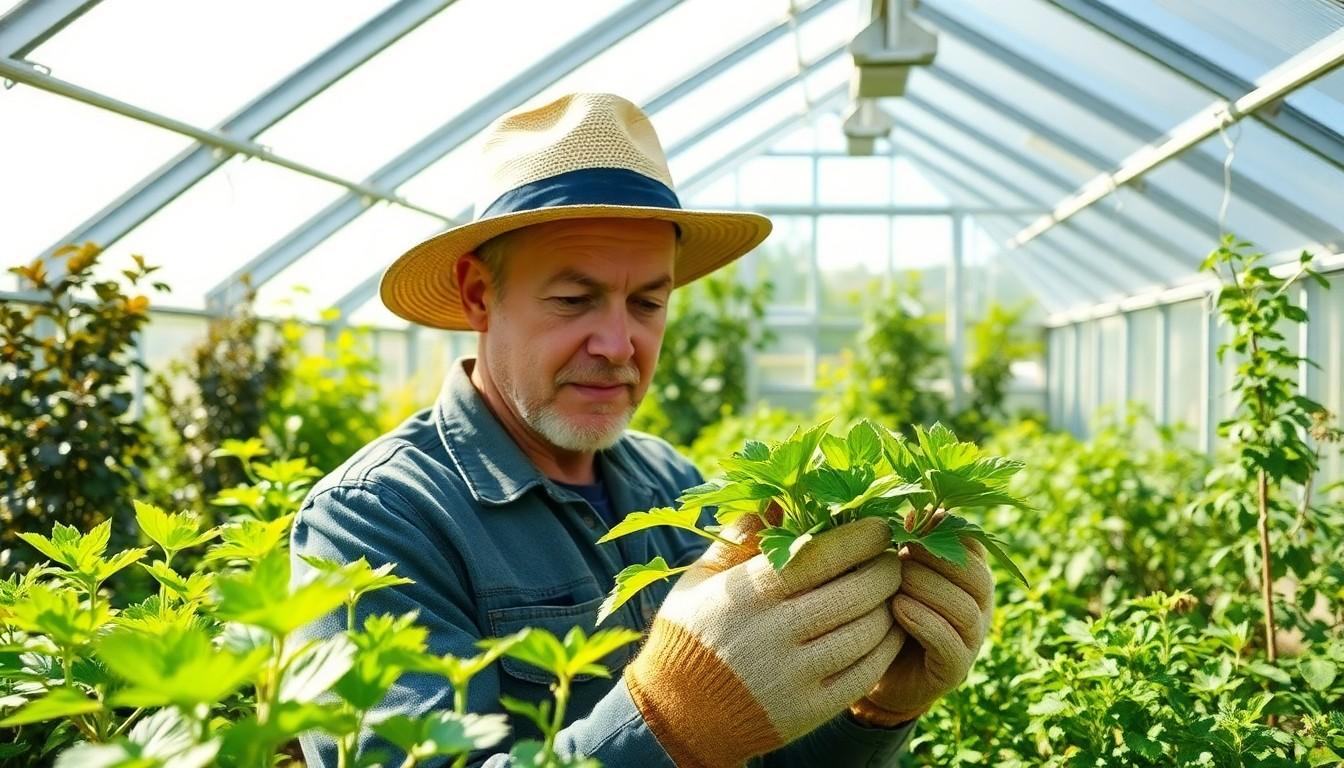
When it comes to nurturing plants in controlled environments like polycarbonate greenhouses, maintaining the perfect temperature is crucial for success. These greenhouses have revolutionised temperature management through their exceptional insulation properties and unique multiwall construction, creating stable growing conditions year-round.
These innovative structures excel at heat retention thanks to their specialised design that traps warmth in insulating air pockets. You’ll find that polycarbonate panels offer superior thermal protection compared to traditional glass, significantly reducing heat loss while maintaining consistent internal temperatures. This remarkable efficiency helps protect your plants from sudden temperature fluctuations that could otherwise hamper their growth and development.
The special structural characteristics of polycarbonate greenhouses raise the conditions for plant growth. The nature of the material delivers several advantages for plant protection and temperature regulation. Understanding the greenhouse effect—the process by which certain gases trap heat in the Earth’s atmosphere—helps explain how polycarbonate greenhouses achieve similar thermal retention properties. This concept is key to how polycarbonate greenhouses create ideal growing conditions by retaining warmth effectively.
The air pockets between Polycarbonate panel walls trap heat effectively, maintaining stable temperatures inside the greenhouse.
| Insulation Performance Metrics | Polycarbonate Values |
|---|---|
| Heat Retention Rate | Up to 85% |
| Temperature Fluctuation Range | ±2-3°C |
| Insulating Air Layer Count | 2-3 layers |
The double or triple-wall designs create:
Polycarbonate panels deliver balanced light transmission while filtering harmful UV rays. The material allows optimal light levels for photosynthesis while protecting plants from damage.
| Light Properties | Performance Rates |
|---|---|
| Light Transmission | 85% |
| UV Protection | 99% |
| Light Diffusion | Even distribution |
Key light management features include:
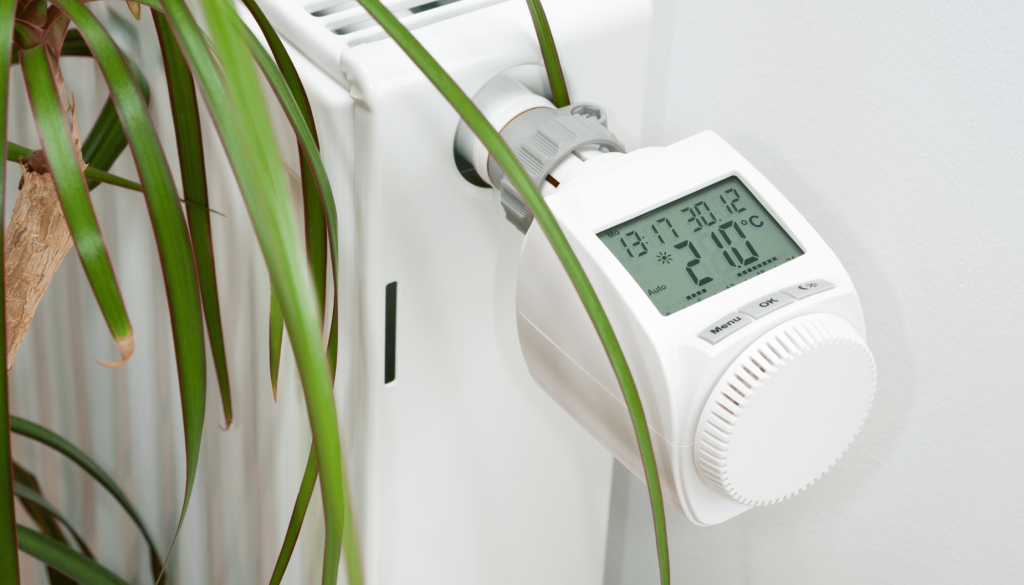
Temperature control in polycarbonate greenhouses relies on specific components that work together to maintain optimal growing conditions. These systems regulate internal temperatures through a combination of ventilation management thermal mass solutions.
Effective ventilation creates essential air circulation in polycarbonate greenhouses through three primary methods:
Thermal mass elements help stabilise greenhouse temperatures through heat absorption storage:
| Component Type | Temperature Impact | Maintenance Frequency |
|---|---|---|
| Natural Ventilation | ±5°C adjustment | Daily monitoring |
| Forced Ventilation | ±8°C adjustment | Weekly checks |
| Thermal Mass | ±3°C stabilisation | Monthly assessment |
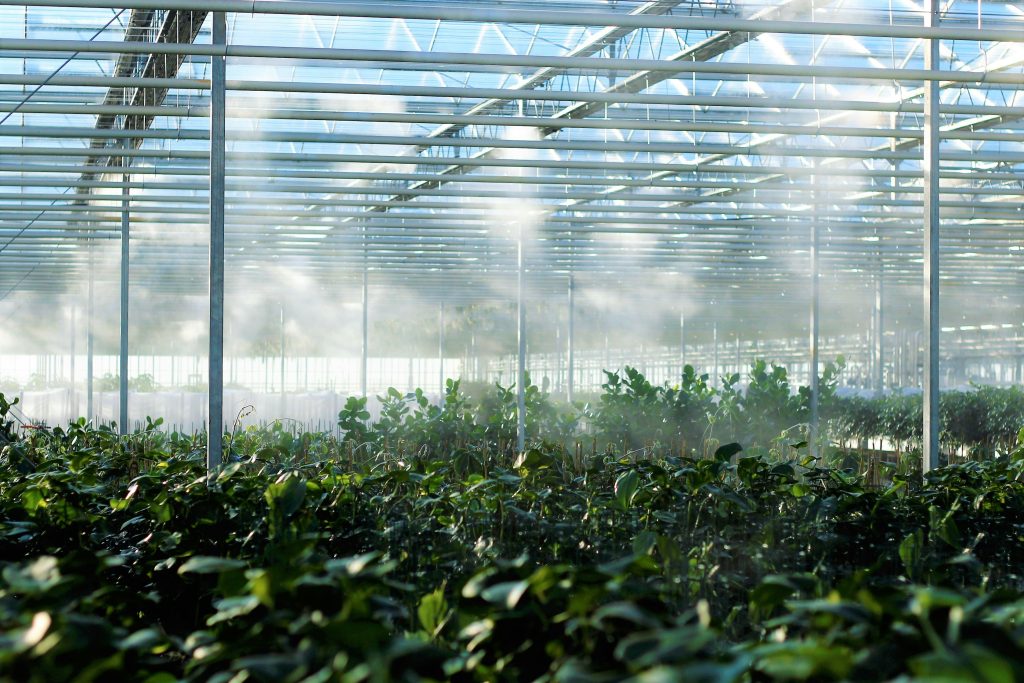
Temperature control in polycarbonate greenhouses requires specific cooling strategies during summer months. Managing heat effectively prevents plant stress while maintaining optimal growing conditions.
Passive cooling techniques maximise natural airflow patterns to reduce greenhouse temperatures:
| Cooling Method | Temperature Reduction | Water Usage (L/hr/m²) |
|---|---|---|
| Shade Netting | 3-5°C | 0 |
| Wet Walls | 5-10°C | 5-8 |
| Mist Systems | 3-7°C | 2-4 |
| Cross Ventilation | 2-4°C | 0 |
Digital controllers monitor greenhouse conditions and activate cooling systems automatically:
Maintaining optimal temperatures in polycarbonate greenhouses during winter requires specific heating equipment and conservation methods. The combination of efficient heating systems and strategic insulation techniques creates an ideal environment for plant growth in cold conditions.
Four primary heating systems provide warmth in polycarbonate greenhouses:
| Heater Type | Coverage Area | Heat Output | Operating Cost/Month |
|---|---|---|---|
| Electric | Up to 8m² | 1,500W | £45-60 |
| Paraffin | Up to 12m² | 2,000-4,000 BTU | £30-40 |
| Gas | 10m²+ | 15,000-30,000 BTU | £50-70 |
| Hydronic | 15m²+ | Variable | £40-55 |
| Conservation Method | Heat Retention Rate | Installation Cost |
|---|---|---|
| Thermal Screens | 35% | £8-12/m² |
| Ground Insulation | 20% | £15-20/m² |
| Draft Prevention | 15% | £5-8/m |
| Heat Storage | 10% | £3-5/container |
| Double Wall | 25% | £10-15/m² |
Advanced climate control technologies in polycarbonate greenhouses combine AI-driven monitoring with automated systems to maintain precise growing conditions. Modern systems integrate multiple components to regulate temperature humidity CO2 levels with minimal energy waste.
AI-powered sensors continuously track critical environmental parameters in polycarbonate greenhouses. These intelligent systems:
The monitoring equipment connects to a central control hub enabling precise adjustments based on collected data. Digital sensors placed throughout the greenhouse create temperature maps identifying hot cold spots requiring attention.
Automated ventilation systems respond to sensor data maintaining optimal growing conditions through:
| System Component | Temperature Impact | Energy Efficiency |
|---|---|---|
| Mist Cooling | -3 to -10°C | 85% |
| Draft Fans | -2 to -5°C | 90% |
| AI Controls | ±0.5°C precision | 75% reduction |
The integration of smart monitoring automated controls creates a self-regulating environment. These systems maintain consistent growing conditions while reducing manual intervention operating costs.
Managing temperature control in polycarbonate greenhouses requires a balanced approach to heating cooling and ventilation systems. Through the combination of advanced materials smart technology and proper maintenance you’ll create an optimal environment for your plants to thrive year-round.
The key to success lies in implementing the right mix of temperature control solutions for your specific needs. By leveraging automated systems and AI-driven monitoring alongside traditional methods you can maintain stable growing conditions while optimising energy efficiency.
Whether you’re dealing with summer heat or winter frost polycarbonate greenhouses offer the versatility and performance needed for successful plant cultivation. With proper temperature management these structures will continue to provide an ideal growing environment for years to come.
Polycarbonate greenhouses maintain stable temperatures through their multiwall construction, which provides excellent insulation. The panels can retain up to 85% of heat and limit temperature fluctuations to ±2-3°C. Combined with proper ventilation systems and thermal mass solutions, these greenhouses create optimal growing conditions year-round.
Polycarbonate panels offer 85% light transmission whilst blocking 99% of harmful UV rays. They provide diffused light distribution, preventing plant scorching, and feature UV-resistant coating for extended durability. The panels maintain their clarity with minimal yellowing over time.
Several cooling options exist, including natural cross ventilation, shade netting, wet walls, and mist systems. Automated temperature control systems with digital controllers and sensors can activate these cooling mechanisms when needed. These methods can be combined to achieve optimal temperature reduction.
Polycarbonate greenhouses excel in winter conditions, offering superior heat retention compared to traditional glass. With proper heating equipment (electric, paraffin, gas, or hydronic systems) and heat conservation methods like thermal screens and ground insulation, they can maintain temperatures 30°F warmer than outside.
Polycarbonate greenhouses typically last 10-20 years with proper maintenance. The panels are durable and resistant to weathering, featuring UV-protective coatings that prevent degradation. Regular cleaning and maintenance can help extend their lifespan.
AI-powered sensors monitor environmental parameters with ±0.5°C accuracy and can reduce energy consumption by 25%. The system automatically adjusts ventilation and cooling based on real-time data, creating a self-regulating environment that requires minimal manual intervention.
Condensation can be managed through proper ventilation and air circulation. Installing bubble wrap lining helps prevent drips on plants, while maintaining adequate airflow through vents reduces moisture build-up. Using mechanical ventilation systems and maintaining appropriate temperature levels also helps control condensation.
Polycarbonate offers better insulation, superior UV protection, and improved light diffusion compared to glass. It’s also lighter, more durable, and provides better temperature stability. The multiwall construction helps maintain consistent growing conditions while being more energy-efficient.

Learn how to choose your perfect first greenhouse with our expert guide. Discover size, materials, and features to extend your growing season by 2-3 months.
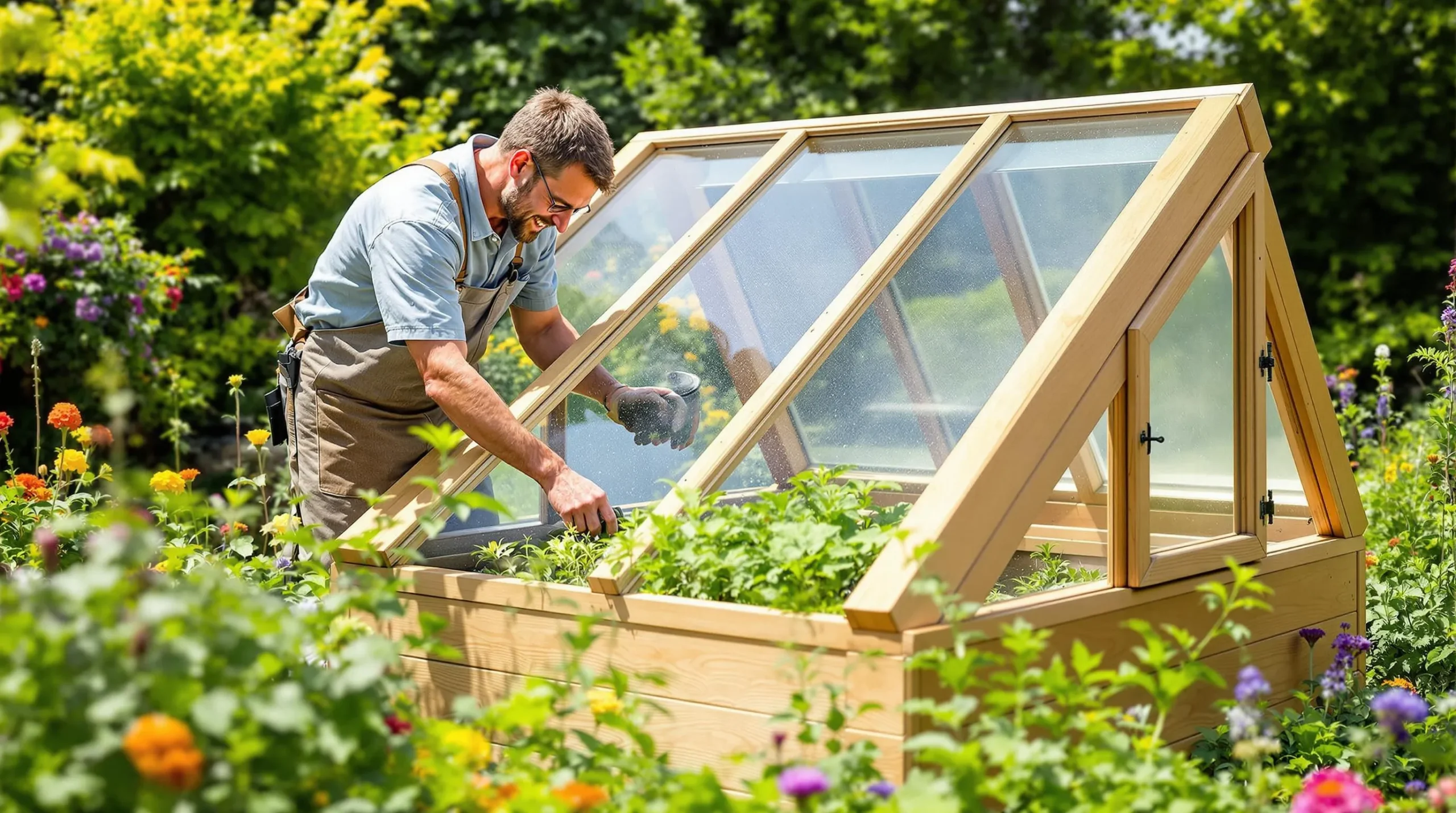
Learn how to make a cold frame to extend your growing season, protect plants in winter, and grow seedlings all year. Simple, cost-effective, and DIY-friendly!